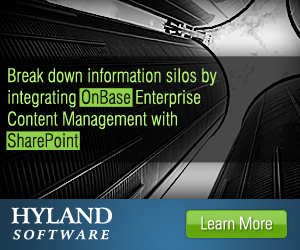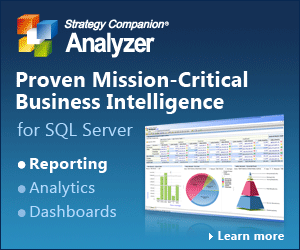Fidelity Gets a Boost From Cutting Edge Document Automation
- Saturday, November 1, 2008, 13:01
- Cover Stories
- Add a comment
 Fidelity Investments is the number one provider of workplace retirement savings plans in the United States with administered assets of nearly $840 billion held by more than 14 million participants in over 18,000 defined contribution plans as of June 30, 2008.
Fidelity Investments is the number one provider of workplace retirement savings plans in the United States with administered assets of nearly $840 billion held by more than 14 million participants in over 18,000 defined contribution plans as of June 30, 2008.
Fidelity has a tradition of serving this large customer base with highly customized investment reviews. The needs of the defined contribution clients have steadily grown increasingly complex – particularly with the recent roll-out of the Pension Protection Act, making the process for creating these investment reviews more time consuming.
“We realized that these reports were becoming more complex, and the level of analysis expected in the defined contribution space was becoming highly sophisticated,” says Patrick Cote, vice president of Investment Services with Fidelity. “This was something that was building up gradually over time.”
While Fidelity wanted to continue its tradition of specialized, targeted service to its customers, it realized that it needed to shrink the time it took to prepare these investment reviews, which was running approximately 22 days. The team decided it needed a system for pulling together data from disparate sources more efficiently.
“We didn’t want a cookie cutter approach because our reports are tailored to meet each client’s individual needs. At the same time, we wanted to build a scalable solution that would efficiently provide the information and analysis required in a timely fashion,” says Cote.
Fidelity turned to Xinnovation, whose Web-based, Microsoft–standard XiDocs document management solutions include powerful features to deliver the tools for quick data access and management of report customization in an easy-to-use interface. Fidelity and Xinnovation had a history of working together, so both organizations were able to leverage the previous automation of reports for individual Fidelity funds.
The fourth and latest generation XiDocs platform sits squarely on top of the Microsoft Office SharePoint Server 2007, running as a native service inside of SharePoint. Its core engine is a server-based document generation engine that automates documents and enables the assembly of content from Microsoft Office documents, data, text, PDF files, and other sources to create new compound documents without requiring programming on the part of Xinnovation customers. The administration features enable management of user portal Web pages, information dashboards, document templates, content management, end-user document request wizards, and document libraries, workspaces, and permissions.
Fidelity’s situation stood out not only because of the comprehensiveness of its product offerings, but also because the business processes in this area had previously been handled by Fidelity exclusively.
“We really worked with Fidelity in interesting territory where they had traditionally done a lot of this on an internal-only basis, and where as a third party we streamlined, automated, and integrated over a dozen unique data files and sources into one investor database to drive this document creation solution,” says Paul Stansbury, Xinnovation’s CEO.

“We recall meetings early in our relationship where many members of the Fidelity organization, and admittedly ours too, questioned the ability to get to a truly self-service model for report creation and customization, and now here we find ourselves amazed at the fact that we’ve achieved just that. It was more than just a great toolset in XiDocs, but some focused business change management on Fidelity’s part, and perseverance on the collective part of the combined Fidelity and Xinnovation team who got the job done,” says Stansbury.
As a result, Fidelity can connect to disparate back-end systems and in just a few hours create reports that vary in length from 30 to 100+ pages and include text and data assembled into charts and graphs. Fidelity creates approximately 4,000 of these reports a year, so the time savings from 22 days down to hours has been a big advantage.
Previously, much of the time spent on report assembly was consumed by support staff members as they retrieved and compiled data from multiple business units and systems. Today, investment consultants create investment reviews on their own because the access to data and content is at their fingertips. Report time is now spent analyzing the client’s situation, rather than on the technical aspects of retrieving data. “The support teams, which once bore the brunt of the work of report assembly, are now free to devote time to value-added services that will further enhance re-
port content,” says Cote.
“It’s about empowering the business user to take control of the document for customization purposes using smart templates, data and content menu selections, and automation, while minimizing the undesirable experiences from their past where they used to resort to the elbow grease of copying and pasting,” says Stansbury.
 As an additional feature, Fidelity and Xinnovation implemented a direct XML connection with Fidelity’s print vendor. At the point in the process where the reports have been completed, reviewed, and are ready to go to the printer, pushing a print trigger in the XiDocs workflow system automatically sends an electronic copy of the final document (in a PDF format ready for high-end printers) directly to the screen of the print management system with the necessary control file to automate the printing process with little to no human intervention.
As an additional feature, Fidelity and Xinnovation implemented a direct XML connection with Fidelity’s print vendor. At the point in the process where the reports have been completed, reviewed, and are ready to go to the printer, pushing a print trigger in the XiDocs workflow system automatically sends an electronic copy of the final document (in a PDF format ready for high-end printers) directly to the screen of the print management system with the necessary control file to automate the printing process with little to no human intervention.
While the investment reviews are still built around a hard copy format based on customer preference, Fidelity is exploring ways to extend that to other media.
“To the extent that we can provide our reports through email or our client portal, Plan Sponsor Workstation, we can extend a ‘greener’ process,” says Cote. “In addition, Xinnovation has a new product, XiDocs Xplorer, which allows us to leverage our content library and take the investment reviews to the next level, thus enabling Fidelity to explore new interactive communication options with clients.”
 Print This Post
Print This Post






